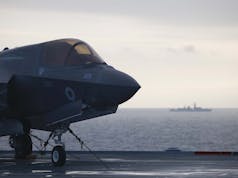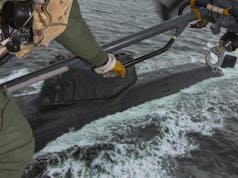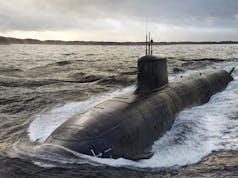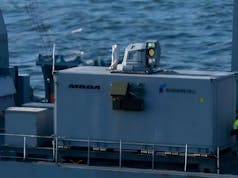The Type 31 Frigate Programme continues to move forward despite facing challenges that have extended its timeline.
The project, which aims to deliver a fleet of general-purpose frigates for the Royal Navy, remains at an Amber Delivery Confidence Assessment (DCA), according to the Infrastructure and Projects Authority (IPA) Annual Report 2023-24.
Designed to serve as a versatile and flexible addition to the Royal Navy’s surface fleet, the Type 31 frigates will replace ageing vessels while addressing modern threats. These ships are expected to perform a wide range of missions, including intelligence collection, defence engagement, and intercepting unlawful activities at sea. Additionally, the programme supports the UK’s commitment to maintaining a global naval presence and strengthening alliances.
The programme is considered a pathfinder initiative, setting the stage for the government’s broader shipbuilding ambitions by emphasising cost-effective, adaptable designs.
Ongoing Challenges
While the programme has made progress, several issues remain:
- Commercial and Workforce Challenges: A commercial dispute with the shipbuilder has been resolved, but the programme continues to face challenges related to inflation and a shortage of skilled shipbuilders.
- Technical Hurdles: Integrating a new combat system for the Royal Navy and adhering to an ambitious build timeline for the first-of-class ship present significant technical challenges.
- Revised Timelines: The project’s completion date has shifted from March 2029 to May 2030, reflecting adjustments made after the dispute resolution and subsequent schedule risk assessments.
Path Ahead
Efforts are ongoing to mitigate these challenges, with the MOD and contractors working collaboratively to identify schedule risks and potential efficiencies. The programme’s progress is being closely monitored under the Government Major Projects Portfolio (GMPP) governance processes.
Despite these hurdles, the Type 31 programme remains on track to deliver significant capabilities. The first ships are expected to enter service later int he decade, providing the Royal Navy with a credible, globally deployable warship.
Understanding Delivery Confidence Assessment (DCA) Ratings
The Delivery Confidence Assessment (DCA) ratings provide an evaluation of the likelihood of a project meeting its objectives in terms of time, cost, and scope. The Infrastructure and Projects Authority uses these ratings to identify challenges and provide recommendations for improvement. The ratings are categorized as follows:
- Green: A Green rating indicates that the project is on track to deliver successfully, with minimal risks identified. Any issues are well understood and manageable within the existing plans.
- Amber: An Amber rating signifies that while successful delivery is feasible, there are significant issues that require focused management attention. These challenges could pose risks to the project’s timeline, budget, or objectives if not addressed effectively.
- Red: A Red rating reflects serious concerns about the project’s ability to meet its objectives. Immediate corrective action is needed to address fundamental issues, as the project is unlikely to succeed without significant changes or interventions.
These ratings offer a snapshot of project performance and help ensure that potential issues are identified and mitigated early, improving the likelihood of successful delivery.














So has this been rebaselined to absorb the 14 months delay and avoid being a red project? If so it’s disappointing that it’s still amber. I’m not sure why the delay is being associated with the financial dispute. It will be interesting to see if a new delivery date for Venturer is vouchsafed to the taxpayers when it’s finally launched at some point this year.
I love these new Type 31s, I think they’re so damn cool.
Great hullform, roomy for expansion and a good weight at 7,000t, no warship should be lighter than that.
I think the armament is superb and demonstrates impressive ability to choose excellent offensive and defensive capabilities while keeping costs under control.
Those Bofors are sick after, anti-ship, Anti-Air and CIWS so they don’t need to purchase Phalanx.
Strike length Mk41 gives you unparalleled flexibility and they can quad pack CAMM.
Not to mention the Wildcat helo.
CODAD means no expensive GT and it’s still fast
All AESA radar, extensive ECW suite
All tied together with this new OTS Combat system.
I ain’t know much about it, other than it’s not AEGIS, hopefully it demonstrates the ability to identify targets and coordinate all the weapons itself.
The modular mission bay that takes shipping containers as the modules? Genius.
And all for £250 million
You are John Healey and I claim my £5 😁
£250 million – is it April 1st already ?.
Lol 250 Mil was the og price excluding gfe. That’s been raised to about 300mil or more after payment disputes, and then the addition of Mk41 will be costed above that.
Exactly – £250mil was the ‘base model’ price tag before any ‘optional extras’ were added. At the time, this was a smart move by the RN – five ships for £1.25bn which kept the Treasury happy. The RN knew extra costs would be incurred later (such as the Mk41 VLS) but they never would have got 5 ships if those costs were included upfront.
Also I read elsewhere that that 40mm Bofors is actually cheaper than Phalanx – not sure how accurate that is but if it’s true, then it might be worth looking at using it on the rest of the fleet – cheaper, longer range and heavier punch – done deal!
Type 31 – the new Bacchante class
So last type 31 delivered in May 2030 so probably operational some time in 2031….
The late 2020s are going to be a real problem escort wise for the RN.
Yes, but the die is cast now. The T23 lifex has done its thing. Got to hope Glasgow, Cardiff and Venturer come into service on time or earlier and have few teething troubles. All the technology is proven so reason to be optimistic I think.
I dont foresee any major issues with the Type 31 as the Propulsion set up is pretty much tried and tested and is reasonably basic,but i worry about the Type 26 as it uses yet another variation of GT and DG’s ( CODLOG ) ,and with the late delivery of the Gearbox for Glasgow i dearly hope there is not another T45 fiasco in the making.
Type 31 has a high top speed for diesel propulsion. I have a vague memory that the RN did a design trade off in respect of the mission bay to achieve that. I don’t think enough is made of just how much more capable T31 is than T23 in the GP role in littoral scenarios. It can accommodate a lot more RM and the flight deck can handle a Chinook. There is storage under the flight deck for 6 20ft containers, although without a lift or a dockside crane I don’t know how you would access them. Isn’t the CODLOG architecture of T26 the same as that used in QE?
I don’t think the T26 is the same as the QE carriers. The carriers are all electric drive with two gas turbine and four diesel generators to provide the electricity. The T26 is driven by diesel generators driving electric motors or by a single gas turbine driving the two propellor shafts via a gear box. This is from memory so might not be 100% accurate
The QE Carriers use IEP,the same set up as used in the Type 45’s but with MT30 instead of WR21 GT’s.
I wouldn’t worry about the propulsion system for the T26, the combination of RR MT30 and RR MTU DG’s is a well proven and very reliable combination, it’s used by Japan and S Korea in their frigates. As for CODLOG in this combination it’s used in S Koreas Daegu and Chungnam class frigates (so probably come with a 7 year warranty).
What is different is that the T26 use 4 DG sets rather than 2 and it all requires a higher capacity and ultra quiet gearbox.
Amazingly the RN has learnt some important lessons from both their own and other Navy’s issues and have taken pro active steps to pre empt any problems. With the memory of the T45 in mind and the problems with the gearboxes on the USN LCS1 and German K130 and with the T45 issues in mind they decided to asses and de risk the production process.
They took the unusual step of ordering the gearboxes early even before the ships were and de risked it by getting David Brown (the makers) to test the Gearboxes in a specially built test rig before delivery at their Huddersfield site.
Which is a superb idea except when on full power it started to badly vibrate ! Happily the issue wasn’t down to the Gearbox but they had hit a resonance frequency in the Concrete and steel test rig, that caused a delay to delivery but the gearbox was fitted and awaiting use.
Too many promises are made by Defence contractors resulting in orders being placed and the inevitable delays. All defence projects should be subject to penalty clauses to re-imburse HM Government, woth due consideration to purchasing vessels from Foreign shipyards if ours simply arn’t up to the task.
Yes why not send foreign yards all our money to build ships that can give jobs to 1000s here in the UK. Very good
Nice idea but the resulting reduction in build here would increase future bid costs and reduce our ability to build ships at all leaving us at the mercy of foreign yards and no exports like we have received with T-26. We are in this stage precisely because abuse we had written off ship building and let it decline to near extinction so not sure I would want to push it to that final step next time. Keeping a tick over of new ships into the future will help to alleviate the place we have put ourselves whereby efficiencies and skills had to be regained.
To me it looks like we need to order follow on ships within a year. Given that time constraint the only realistic option is to order a sixth T31 sometime in 2025 and at the same time decide what the next vessel will be.
I think there are three options.
T31 numbers 7 to 10
T32 numbers 1 to 4; representing an evolution of T31
T33 for want of an official number. A small vessel around 90 metres and 2,000 tons with small guns two by 40mm and two by 20mm along with perhaps 32 CAMM missiles and 8 mk41 missile launch tubes. Ie a real merchant vessel escort. Ordered in larger quantities say vessels 1 to 10.
Never going to happen. The upcoming SDR is going to wield a huge axe to the Armed Forces. Not that the SDR itself intended it that way but that HMG will never fund its recommendations. Rumours have circulated already that the SDR authors can’t square the circle for less than 2.75% GDP and have been told by HMG to go away and rewrite for 2.5% GDP – which beggars the question of why have the SDR in the first place but that’s a whole other question.
In the real world too many promises by U.K. governments to provide a drumbeat of warship orders to enable shipyards to invest in its workforce and maintain essential skills. How long was our destroyer/frigate building holiday? Or are private businesses suppose to retain workers just in case when and if the U.K. government decides to order a warship or two.
The infrastructure and skills required needs decades of long term investment to provide the efficiency we had in our yards in the early 1990s not feast and famine policies by Politicians and Civil Servants who have no idea.
So probably we are going to see actual worked up operational ships ( not just commissioned)
Venture 2028/2029
Active 2029
Formidable 2029/30
Bulldog 2030/2031
Campbeltown 2031/32
Then tie that in with the likely dates each T26 becomes operational
Glasgow 2028
Cardiff 2029
Belfast 2030/31
Brimigham 2032/3
Sheffield 2033/4
Newcastle 2034/5
Edinburgh 2035/6
London 2036/7
Consider the fact that every single T23 has ended up being scraped 6/7 years after lifex and it’s really bad news on likely losses, the key will if Kent can be refitted or not as that would become the first ever success if not
2025 losses 1 ( Kent) with 0 additions for 7 frigates
2025/6 losses 1 with 0 additions for 6 frigates
2026/7 losses 1 with 0 additions for 5 frigates
2027/8 losses 1 with 0 additions for 4 frigates
2028/9 losses 1 with 2 additions for 5 frigates
2029/30 losses 2 with 3 additional for 6 frigates
2030/31 losses 1 with 2 additional for 7 frigates
2031/32 losses 0 with 1 additional for 8 frigates
2032/33 losses 0 with 1 addition for 9 frigates
2034 10 frigates
2035 11 frigates
2036/37 13 frigates.
2026-2028 will be profoundly challenging for the RN…total escort wise and 2026 onward will be profoundly challenging ASW hull wise as the RN will drop to 3-4 ASW frigates until 2034/5…..bad timing if we end up at with china and or Russia from 2027…
With even more headaches to come – if the monies and will was there to expand the fleet, how could the competing priorities match dockyard availability ?
Rosyth (2031-2036) – Batch 2 Type 31 (Type 32), then Batch 3 Rivers (2035-2039)
Clyde (2035) – Is it more Type 26s with Norway, say 6, 4 for Norway + 2 UK – finishes 42/43, so Type 83 can’t start till 2040, launch 2046, by which time Daring is 36 years + old, or is that too long to wait and merely repeat AAD short shortage in 2040??
Barrow – SSN finishing now with SSBN overlapping followed by AUKUS
Cammell Laird – RFA
H&W – SSS then MRSS
Could the B3 Rivers go to Appledore so that the 83s could be started inside at Rosyth around 2035?? Even this is tight ??
Seems to me that the Navantia purchase of H&W does suggest that Appledore could have a role. B3 River = MCMV mothership perhaps?
In any event we can muddle through with MCMV but we have to keep the focus on delivery and crewing of T26 and T31 and regenerating 19 reliable, capable escorts. Walk before we run.
Unless they are willing to rebuild Appledore I can’t see it being used for ship construction or rather it making sense to do so, several of the Irish P60s suffered damage from the tidal beaching they had during fit out and the winter storms of those years. Building blocks for assembly elsewhere would make more sense.
Sobering possible timeline for withdrawal of rest of T-23 class, however, somewhat more pessimistic than official RN projections for OSD for the class. If indeed reality, Daring class DDGs would be further tasked; fortunately PIP would be in the rearview mirror. Hull mounted sonar could be updated to latest standard. Technically feasible to equip the Daring class w/ a tail? 🤔
Interestingly before the RN went around and around in a circle for years on a future frigate.. the conservative option was actually to simply bash out a load of T45 variants for a single huge class of 30 surface vessels.
The bow dome is too small for any decent sonar and very much doubt there is any room for a TAS
Thanks for the info, obviously not an ideal plan or scenario.
I have hopes for Kent and Portland. However I had hopes for Argyll too. However, I have no hope for Lancaster or Richmond, which are the two T23s I’d expect to leave service this year. You seem to be more optimistic than me in that regard.
HMS RIchmond was first of the T-23 class to undergo PGMU. Would RN invest in that upgrade only to then cashier the vessel? Anything is possible, but…🤔
Have to start shipping new builds out to other countries this is snail pace
Think classifying T31 as a frigate is pure RN/MOD hype, it has a very good hull but the fit out is as an OPV. It has zero ASW capability, no sonar, no LWT, no anti-sub capable helo, only anti-sub capability is if the crew throw bricks over the side, its AAW capability limited to CIWS, why saying that is when CAMM was part of the T26 CSC fit MBDA classified CAMM as CIWS, ASuW capability with its small calibre guns limited in actual effective range, 57mm has approx. max of 10km to defend against bog hammers.
As said a very capable hull, but needs substantial funding to fit out with capable weapon systems which no doubt will cost double the amount to install had they been designed and fitted in the original build.
When it mattered CAMM fitted to T23 did the job recently in the red sea
Would agree with you when the Type 31 was first announced but the addition of Mk41 VLS is a real game changer for the class. Also, rumour has it the NSM will be cross-decked from retiring Type 23s, improving their load-out even more.
Your point regarding ASW is still valid though. Perhaps the RN has a plan to address at some point later. At this point, we just need to get them in the water as soon as possible.
Sorry that’s just not the case CAMM is not a CIWS it’s a short range area defence missile with a 20km + range.. that’s as good or better than many European frigate AAW fits.
The gun fit is a very good fit for close AAW and surface work, better again than many others.
As for ASuW CAMM is an effective ASuW weapon system a mach 3 100kg missile delivers more kinetic energy than a Second World War 8inch AP shell.
It can carry a Merlin so not sure where the no ASW halo comes from.
Also now the RN are going to be fitting them with Mk41 silos and there is space for the NSM which will undoubtedly be fitted it’s going to be a very effective ASuW combatant.. admittedly not having the hull sonar is bonkers.
Not sure what Euro frigates you’re looking at. The Fremms at least are all armed with Aster
They can’t effectively use Merlin ASW without a native radar.
Mk41 fit won’t be immeadiate
Not sure what you mean by a native radar. Both the Type 31 and the Merlins have radar so i’m confused. Could you expand, please?
FREMMS have Aster but only 16, and many of those tubes will be Aster 15.
GP frigate; what’s in a name? In its basic £250m spec T31 is a patrol frigate. As I recall, the MOD and Babcock went to a lot of commercial trouble to get the RN the hull they wanted; with growth and export potential. The RN could see that we were moving into a world where budgets, role of ships and weapons technology were rapidly changing. Adaptability is a word that appears a lot in the T31 advertising. Build it with machinery rafting and you have an ASW frigate make the mission bay full width and you have an MCMV mothership, enhance the radar and fit Mk41 and you have an AAW destroyer or a mini cruiser. And so on. It may not be ideal or top notch in those roles but it would be credible; and can be built relatively quickly and affordably in numbers, which makes T31 the way-2-go.
Virtually guaranteed T-26 and T-31 classes will be programmed to receive both armament and sensor upgrades throughout lifecycles. Timelines for completion of upgrades? Another proposition entirely, quite probably infrastructure and resource constrained. 🤔🙄🤞
the T-26 already needs a radar upgrade. The development has taken so long, it will be out of date the day it goes into service.